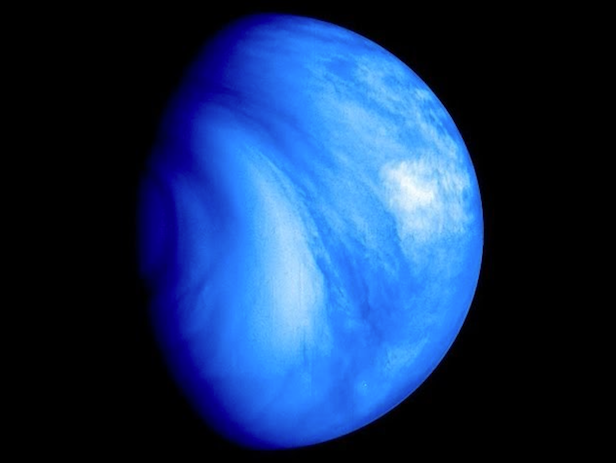Is there evidence of other life in our solar system? Berkeley's SETI research center director Andrew Siemion thinks so. It is a good possibility that Mars or Venus could have been inhabited billions of years ago. Our search has only just begun. We have barely scratched the surface.
As with our own planet lying deep beneath the mantle are ancient artifacts. Evidence of technological civilizations. Covered by soil and rock. Buried by only years of mud and sand and sea. His research has been published in Nature.
Venus - when imaged in ultraviolet wavebands - takes on a blue colour. Image Credit: NASA
As our understanding of the past is unmasked, we grow in the knowledge of other species. Other massive creatures that existed in prehistoric times. Only to have gone extinct, by some cosmic catastrophe. Possibility a meteor hitting the earth. Or shifting in the tectonic plates causing a massive disaster for life on earth billions of years ago. Erasing techno signatures of an indigenous species.
Astronomer Jason Wright at Penn State believes that there may be artifacts of it in our Solar System. That have survived and are buried under the surface of Mars or Venus. Or other celestial bodies in ours or other solar systems.
Astrobiology asks extinct or extant life. Evidence exists in geological records that techno signatures can be found. It maybe that Venus was a thriving city at one time. This is an old concept, Wright noted that in literature dating from 1890's.
Now astronomers are mapping the moons of Jupiter. Europa and Enceladus looking and studying the subsurface of the oceans. That an indigenous technological species may have existed in our solar system. And that a supernova caused a mass extinction. Or possibility gamma rays of epic proportion.
Wright thinks we may have overlooked things in our own geological records as natural phenomena. They may have just died out, as some species do.

